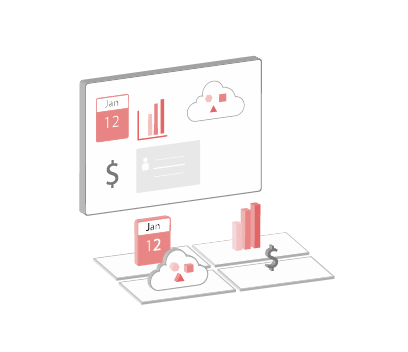
Key functional concepts
Complementary to the functional and support layers, BillingLabs also relies on a few key concepts such as Account Hierarchy and Quote Modeling.
Account hierarchy
BillingLabs replicates the logic of your business model in the Account Hierarchy concept. That concept built today on three layers can be adapted to whichever business structure your company operates in.
The three layers concept reflects a business model based on three stakeholders (BtoBtoC):
- Operator: the entity which delivers the product and services to be billed.
- Reseller: the intermediate entity which sells the service (Reseller, wholesaler, distributor …).
- Customer: the customer entity which consume the product and services, and pay for it.
The customer level can also be further broken down into three sub entities such as Holding entity, subsidiary and division.
Invoicing flows can be managed between all the layers: Operator <-> Reseller <-> Customer and each of these levels has multiple attributes whose combinations offer a wide range of possible customization.

Offer Modeling
The term “offer” in BillingLabs covers three main concepts:
- What is sold: The list of “Services and Product” we are going to sell.
- How this is sold: The list of “fees”: recurring, options, one shot, usage based or not.
- How much this is sold: The “Collection” of associated price elements to be applied by the rating rules or billing rules.
Each offer has its own lifecycle modeled with a set of dates:
- Open for Friendly User Test or Limited Availability?
- General Availability.
- End of Subscription.
The offers can be copied, pasted and amended to avoid creation from scratch.
Glossary
A billing System is a complex engine which refers to sophisticated concepts translated in words. As vocabulary is important, we have listed below words which are used to describe those concepts and tried to provide accurate definitions of the meaning they have in BillingLabs.
Parties glossary:
- Customer: A customer is the entity who uses the services and products, gets invoiced and pays for them.
- Vendor: A Vendor is the entity who sells the services and products to a customer. That entity could be a telecom operator in a BtoC model or another entity such as a distribution partner reselling the services and product the operator produces in a BtoBtoC model.
- Access key: This is the guiding key which defines the relationship between one service produced (a call for an operator) and its consuming entity (a customer). If it is an obvious concept in a store selling products, this is a mandatory concept when selling usage in order to identify the final invoiced entity.
- Subscription: The subscription is the contractual link between the vendor and the customer : it reflects the contract and makes the link between the parties, the offer and the access keys.
Offer glossary :
- Offer: An offer list the conditions for a customer to access given products and services. It is generally composed of recurring charges and events relative charges.
- Recurring charges: This is a fee you will pay each month on your invoice. They can be subject to pro rating.
- Event relative charges: This is typically a Pay per ride modeling: you pay each time you use one particular service or when a specific event occurs.
- One shot fee: This a fee that is nor recurring neither event relative. it could be a setup fee for a service or a cancellation for example.
- Price list: this is the list of prices per event or per recurring charges or per one shot type associated to an offer or a subscription since at the subscription level you can modify any element of the price list.
- Credit / Debit Notes: in some cases, you need to manually compensate some balance of a customer. In other words, it’s a free input manually entered on an invoice (according to a specific authorization process).
- Settlement: it’s the opposite of an invoice when you want to give some money back to a customer.
